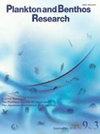Use of environmental DNA to survey the distribution of the invasive mussel Limnoperna fortunei in farm ponds
IF 0.9
4区 生物学
Q4 MARINE & FRESHWATER BIOLOGY
引用次数: 5
Abstract
: The golden mussel Limnoperna fortunei (Dunker, 1857) is an invasive freshwater bivalve species that exerts harmful effects on the environment, as well as man-made structures, such as water-treatment systems. By using conventional sampling methods, it is difficult to detect mussels under low-density conditions; however, environmental DNA (eDNA) analysis may be a rapid and efficient method for monitoring this aquatic organism. In this study, we conducted surveys based on the eDNA analysis of L. fortunei in 15 farm ponds in Japan and compared the results with those of two conventional survey methods, visual census and plankton larval survey, to clarify the effectiveness of eDNA analysis for field surveys of L. fortunei . Primers and a probe specific to L. fortunei were developed, and a method for analysis was established. In the laboratory experiments, the species eDNA was detected in all water tanks containing the mussels, and the concentration of eDNA was high in the experimental tank that had high density of L. fortunei . In the field survey, L. fortunei eDNA was detected in all ponds where the mussels were found by conventional survey, and low concentrations of eDNA were also detected in several ponds where no L. fortunei were found by traditional methods. These results suggest that eDNA analysis has greater sensitivity for the detection of L. fortunei in farm ponds than that of conventional methods. Environmental DNA surveys have little impact on water management and are suitable for surveys at water facilities that have not yet been damaged by the mussels.利用环境DNA调查入侵贻贝在养殖池塘中的分布
:金贻贝(Limnoperna fortunei, Dunker, 1857)是一种入侵的淡水双壳类物种,对环境和人为结构(如水处理系统)产生有害影响。在低密度条件下,传统的采样方法难以检测到贻贝;然而,环境DNA (eDNA)分析可能是一种快速有效的监测水生生物的方法。本研究在日本15个养殖池塘中开展了fortunei的eDNA调查,并与目测调查和浮游生物幼虫调查两种常规调查方法进行了比较,以阐明eDNA分析在fortunei野外调查中的有效性。开发了一种针对金缕草的引物和探针,并建立了分析方法。在实验室实验中,所有贻贝的水箱中均检测到物种eDNA,且在褐藻密度较高的实验水箱中,eDNA浓度较高。在野外调查中,在所有常规调查发现贻贝的池塘中都检测到fortunei eDNA,在一些传统方法未发现fortunei的池塘中也检测到低浓度的eDNA。这些结果表明,eDNA分析方法对农场池塘中fortunei的检测比传统方法具有更高的灵敏度。环境DNA调查对水资源管理影响不大,适合在尚未被贻贝破坏的水设施进行调查。
本文章由计算机程序翻译,如有差异,请以英文原文为准。
求助全文
约1分钟内获得全文
求助全文
来源期刊

Plankton & Benthos Research
Agricultural and Biological Sciences-Aquatic Science
CiteScore
1.30
自引率
0.00%
发文量
32
期刊介绍:
Plankton and Benthos Research is a peer-reviewed journal publishing quarterly original papers, reviews and notes dealing with any aspect of the biology and ecology of planktonic and benthic organisms and their interactions with the environment in any aquatic system, and is open to all scientists around the world. Submission of a paper is held to imply that it represents an original contribution not previously published and that it is not being considered elsewhere.
 求助内容:
求助内容: 应助结果提醒方式:
应助结果提醒方式:


